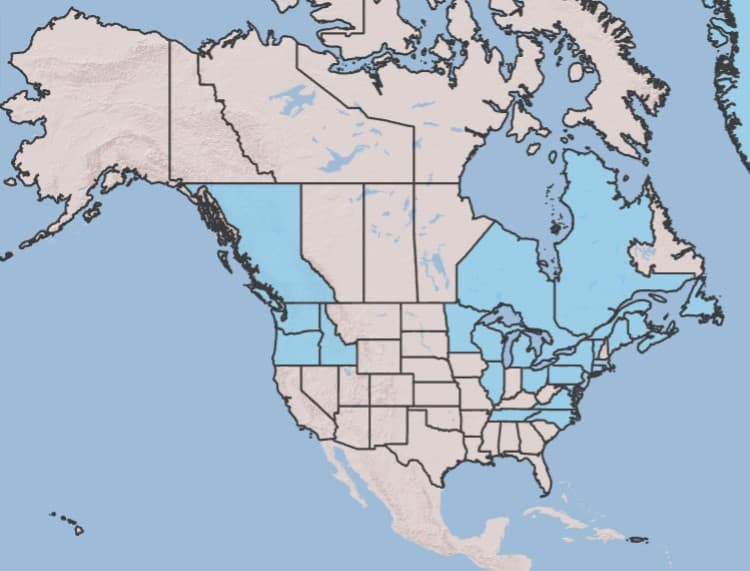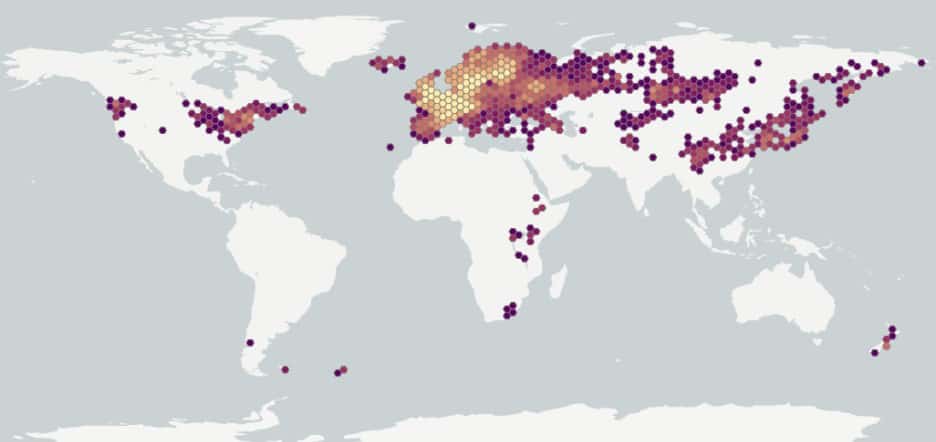Anthriscus sylvestris
Overview
Aperçu
Regulation :
Remarques Réglementation:
- CFIA Weed Seeds Order - Class 2: Primary Noxious Weed Seeds
Regulation Notes:
Distribution :
Répartition :
Anthriscus sylvestris is native to northern and central Africa, Europe and Asia and introduced to southern Africa, North America and Chile (USDA-ARS 2022). The species occurs in the Canadian provinces of British Columbia, Ontario, Quebec, New Brunswick, Newfoundland and Nova Scotia (Brouillet et al. 2010+).
Habitat and Crop Association :
Habitat et Cultures Associées :
The species grows in pastures, damp meadows, old fields, open forests, stream banks, ditches, roadsides and other disturbed areas (Darbyshire et al. 1999, Darbyshire 2003). It is a weed of perennial forage crops and pastures in North America (Darbyshire et al. 1999).
Economic Use, cultivation area, and Weed Association :
Utilisation économique, zone de culture et association de mauvaises herbes :
Duration of Life Cycle :
Durée du cycle vital:
Biennial or short-lived perennial
Dispersal Unit Type :
Type d’unité de dispersion :
Schizocarp, divided into 2 mericarps
General Information
RENSEIGNEMENTS GÉNÉRAUX
Anthriscus sylvestris produces 800 to 10,000 seeds per plant, which are often dispersed by agricultural equipment (Rew et al. 1996) and traffic corridors (Magnússon 2006). This species prefers disturbed habitats and forest edges with moist or mesic soils, rich with organic matter (Darbyshire et al. 1999).
.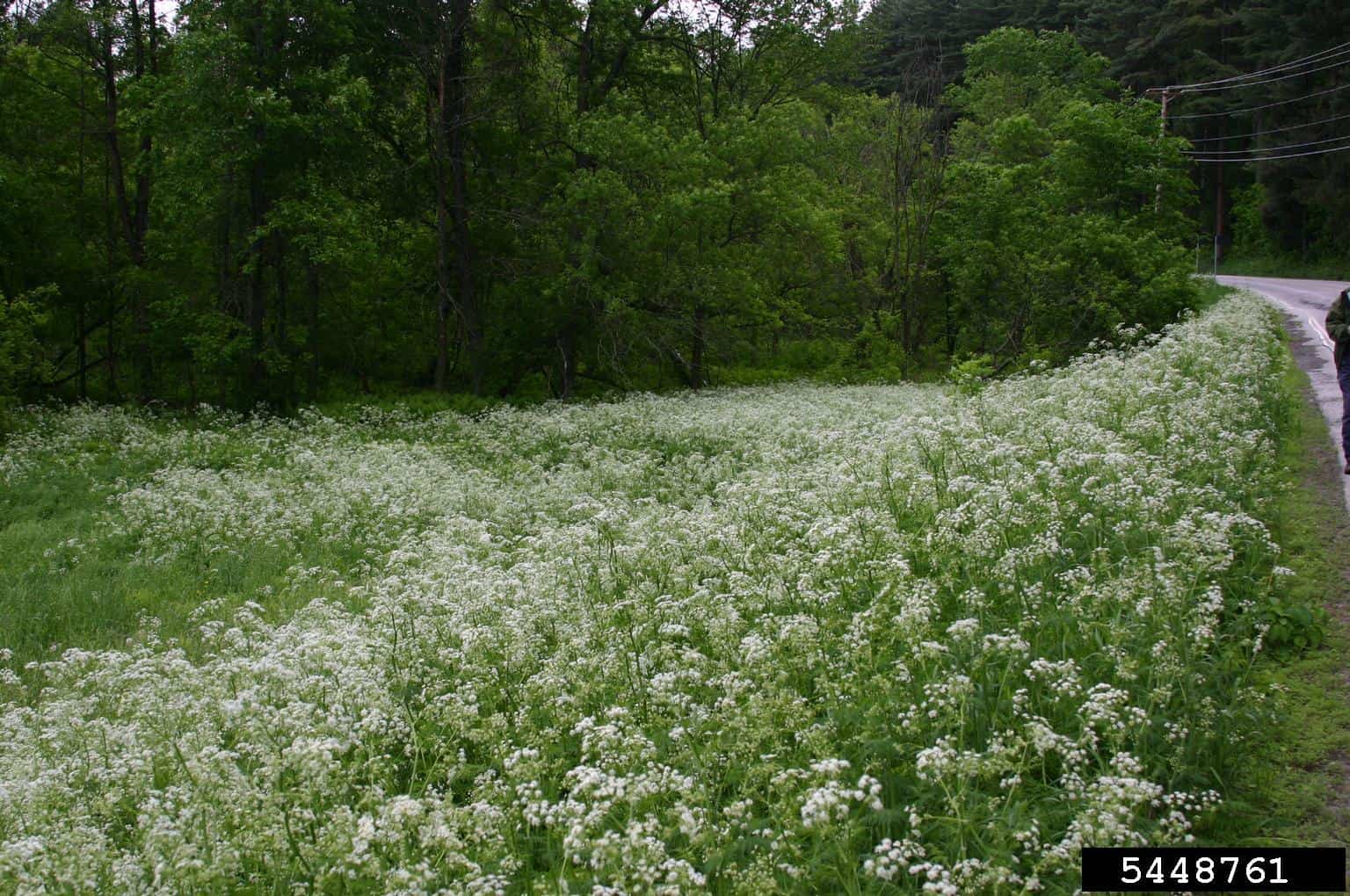
Anthriscus sylvestris infestation (Leslie J. Mehrhoff, University of Connecticut, Bugwood.org)
Identification
Identification
-
Mericarp
Size
- Mericarp length*: 2.8 – 7.2 mm; width: 0.7 – 1.5 mm
*Note: minimum and maximum of 20 mericarps in a normal range of this species using image measurement (ISMA 2020)
Shape
- Mericarp is long teardrop shaped, tapering to a remnant style at one end
- Plano-convex in edge view
Surface Texture
- Mericarp surface is smooth
- Deep furrow along one side of the mericarp
Colour
- Mericarp is shiny brown or greenish-brown coloured
Other Features
Mericarp end with style remnant
- Style remnant is dull brown coloured and triangular shaped
- Connective tissue between the mericarps may be attached to the style remnant
Mericarp end opposite style remnant
- Round or heart shaped, dull brown depression at the wide end
Other features
- The length or size is highly variable among mature mericarps
- Immature mericarps are yellowish-brown coloured
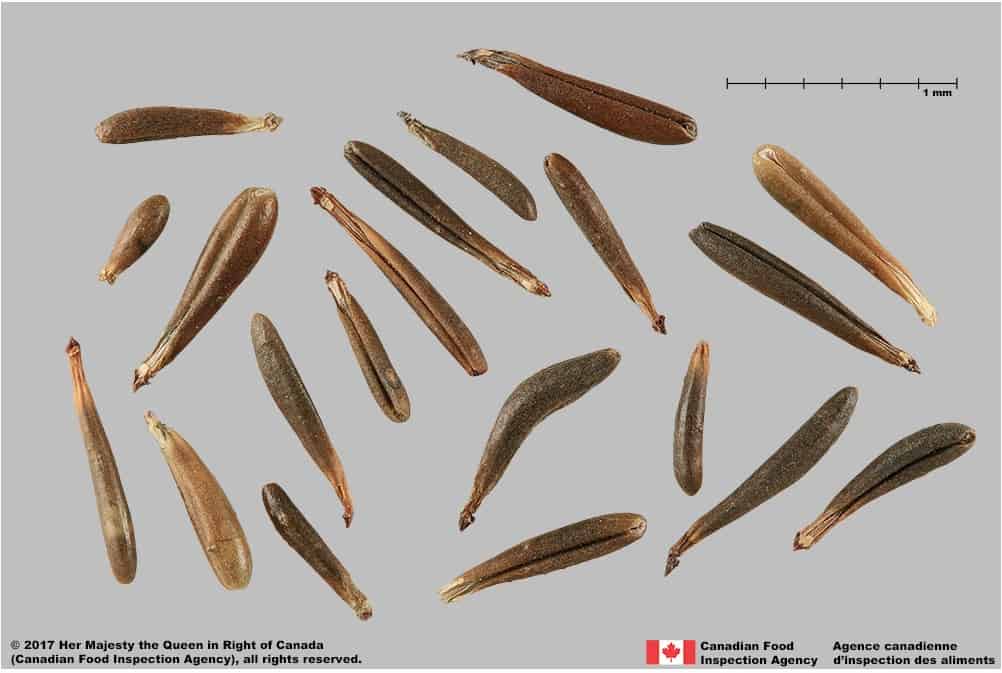
Cow parsley (Anthriscus sylvestris) mericarps

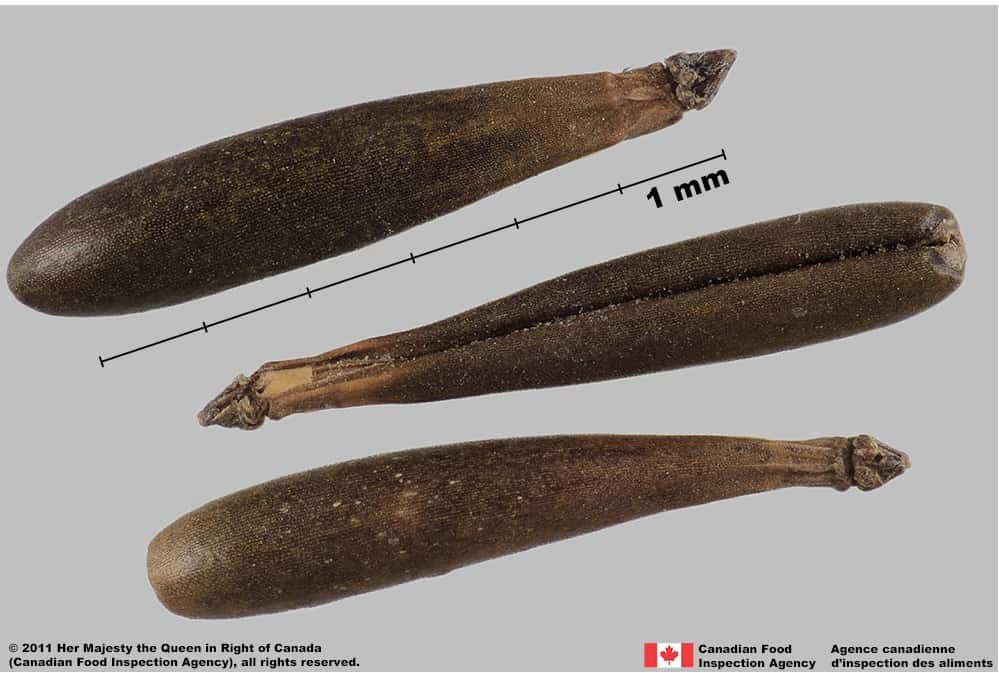
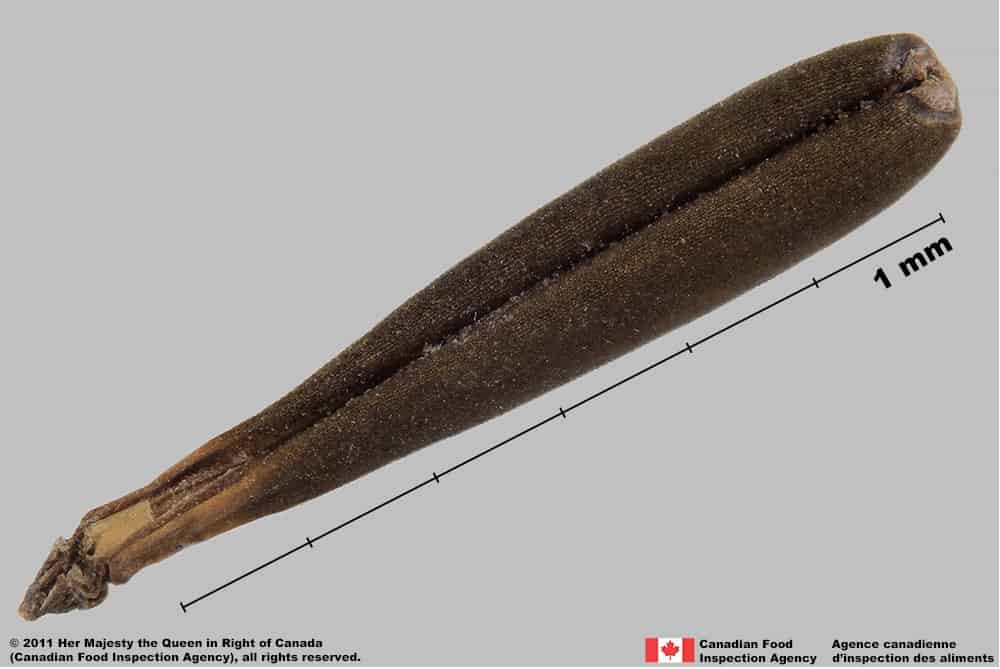
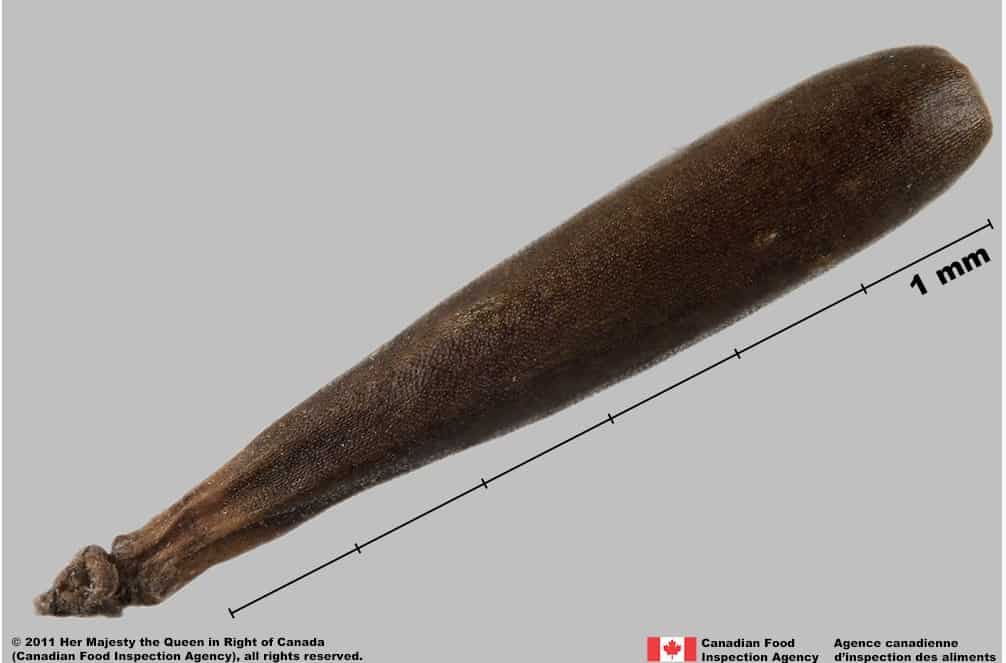
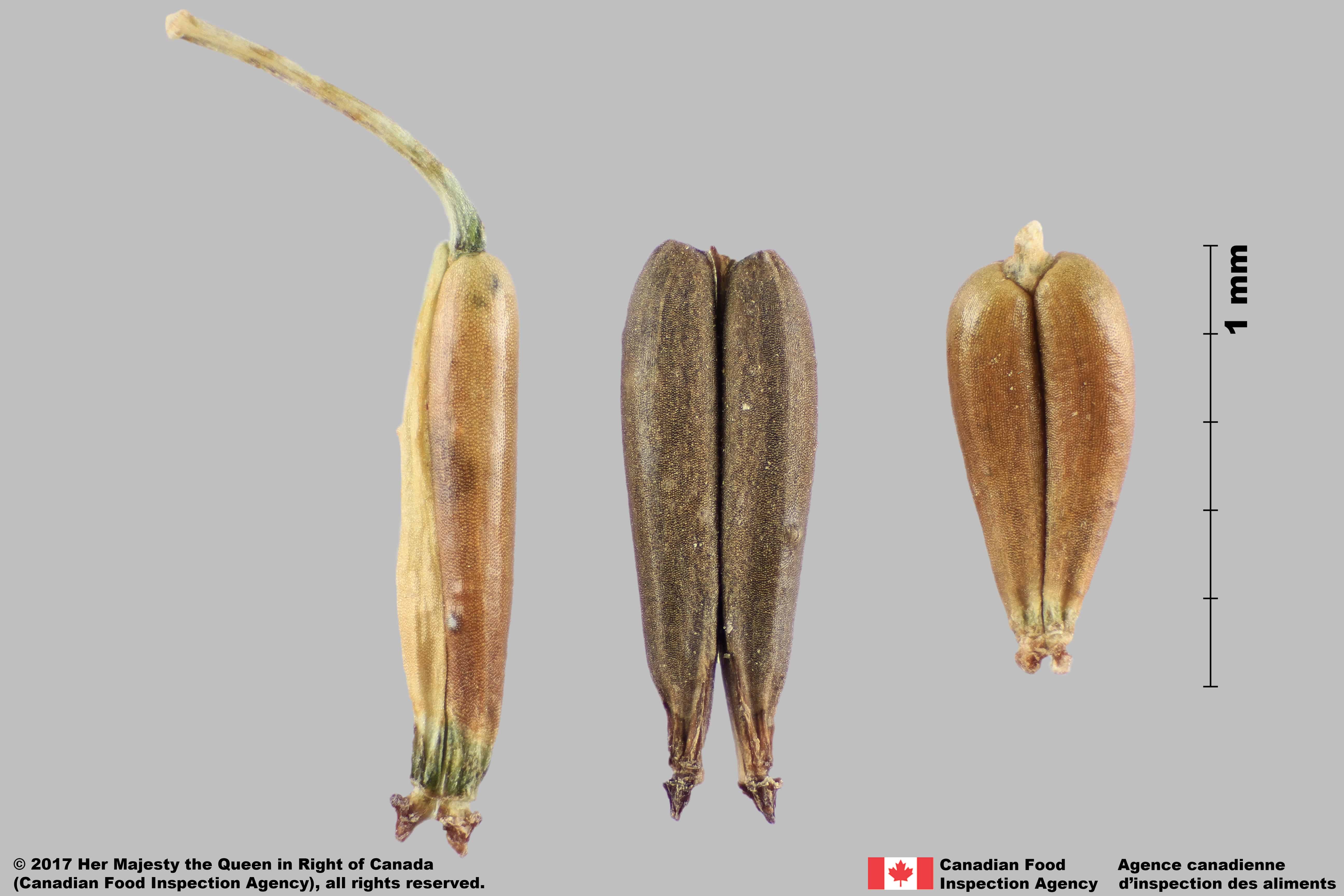
-
Seed
Size
- Seed is similar to mericarp size
Shape
- Seed is long teardrop shaped
Surface Texture
- Seed is smooth
Colour
- Seed is dark brown coloured
Other Features
- Seed coat thin, transparent, adhering to the fruit wall
-
Embryo
Size
- Embryo is a rudimentary size
Shape
- Embryo is linear and in a basal position
Endosperm
- Endosperm is hard and oily, dark brown coloured
Identification Tips
CONSEILS POUR L’IDENTIFICATION
The mericarps of the following three species may be similar in morphology: A. sylvestris, A. cerefolium and A. caucalis. The differences in the mericarps of these species are the size and the surface texture. A. cerefolium mericarps are the longest of the three species with a granular surface texture (Walters 2011). A. caucalis mericarps are the shortest with a spiny tuberculate texture, and A. sylvestris is medium length with a smooth texture.

Cow parsley (Anthriscus sylvestris) mericarp





Additional Botany Information
AUTRES RENSEIGNEMENTS BOTANIQUES
Flowers/Inflorescence
- Flowers are white, notched, 3 – 6 mm in diameter and arranged in a compound umbel (Darbyshire et al. 1999)
Vegetative Features
- Stem (flowering stalk) is grooved, hollow and 0.3 – 1.5 m in height (Darbyshire et al. 1999)
- Triangular leaves are much divided and resemble ferns (FVISS 2022)
- Tap root may reach 2 m in depth (Darbyshire et al. 2003)
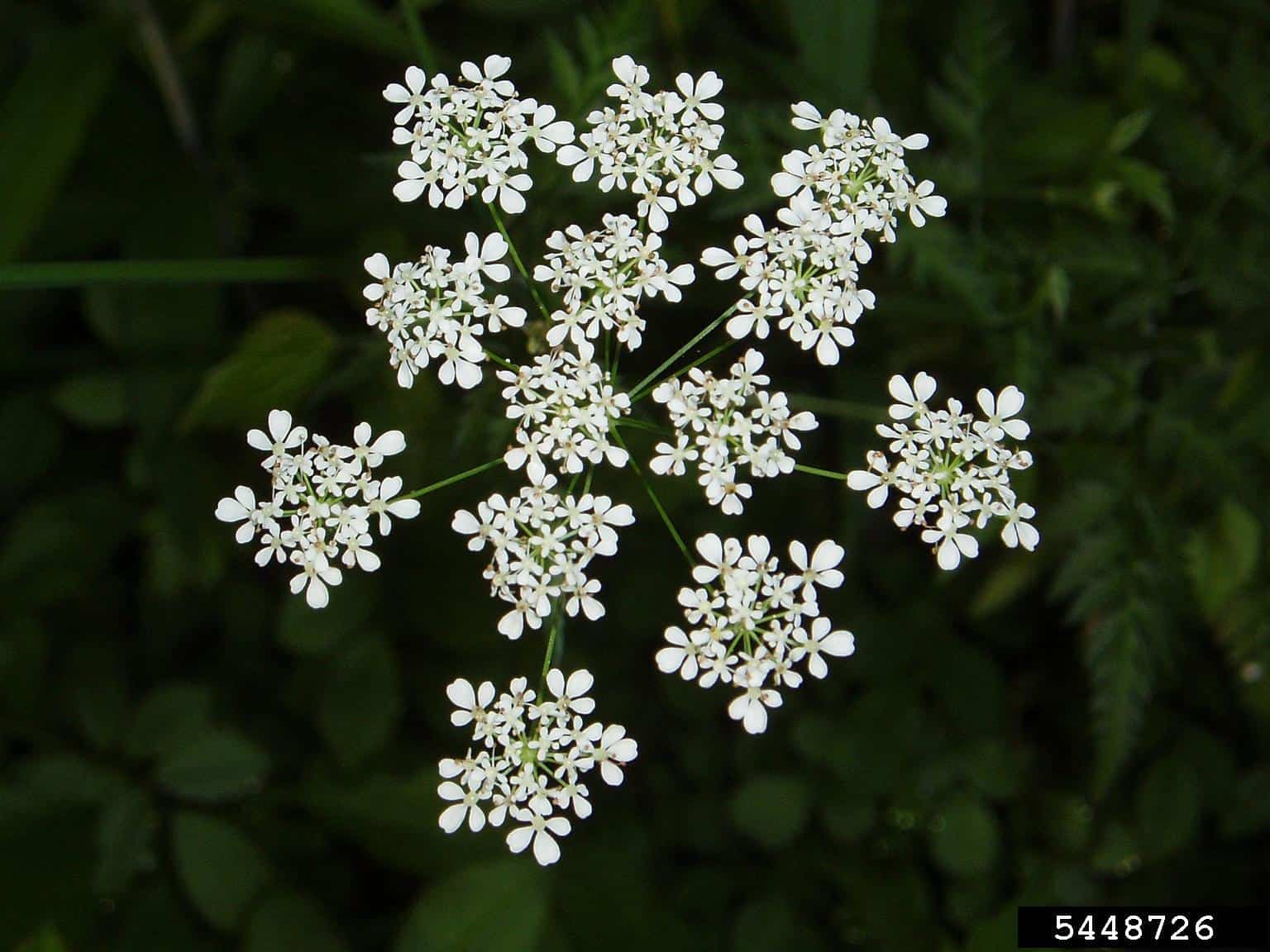
Anthriscus sylvestris flowers and inflorescence (Leslie J. Mehrhoff, University of Connecticut, Bugwood.org)

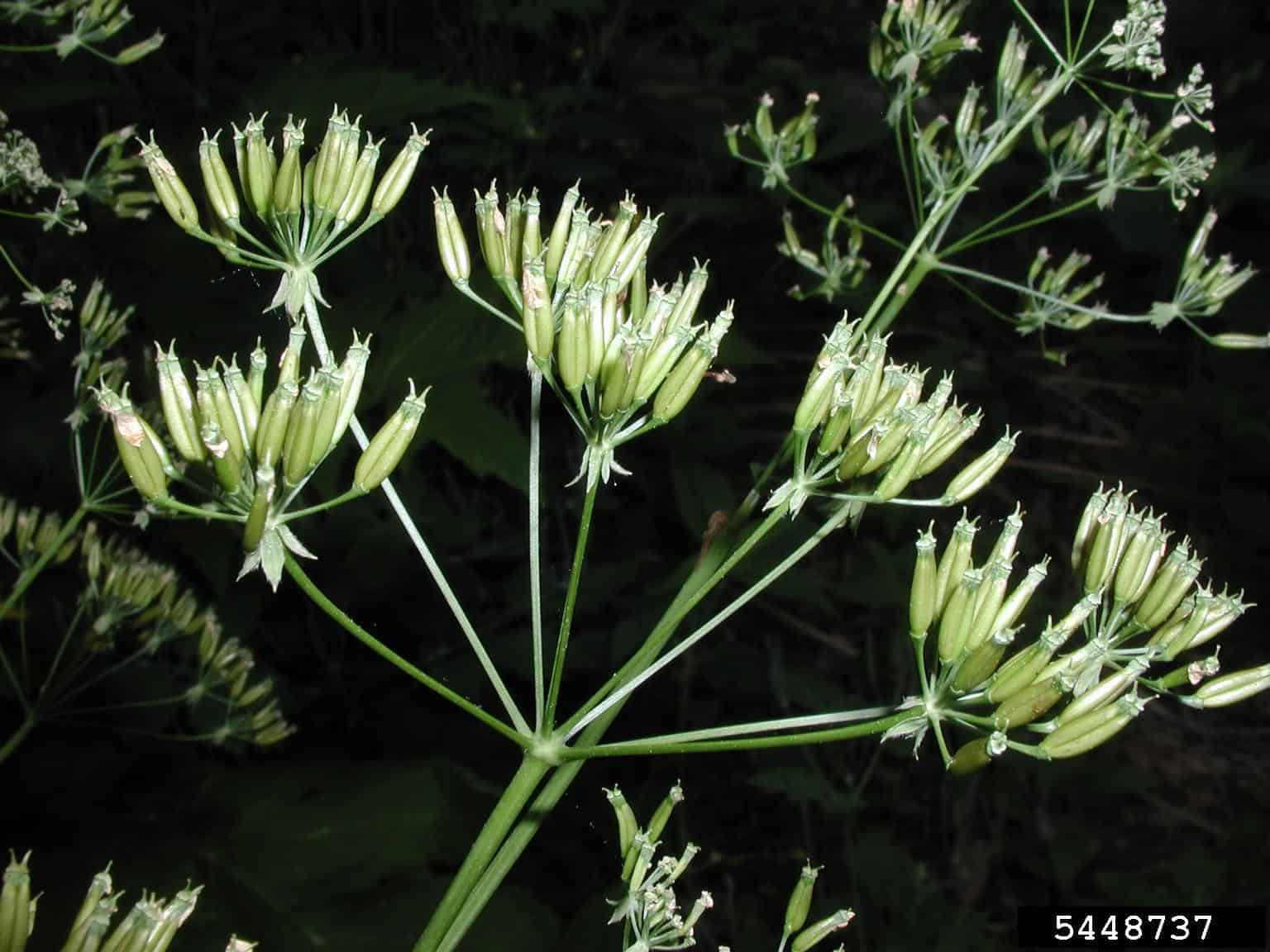
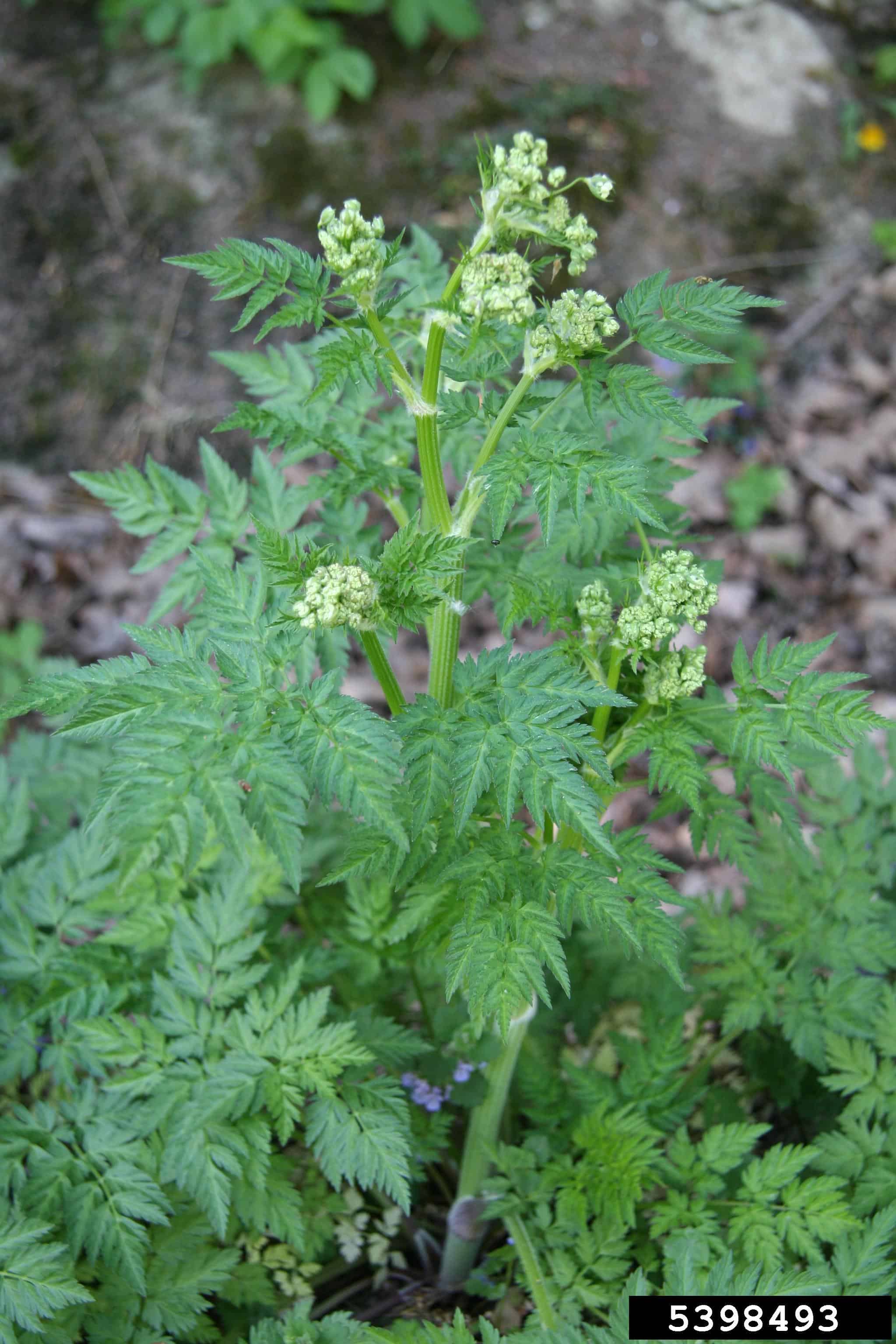
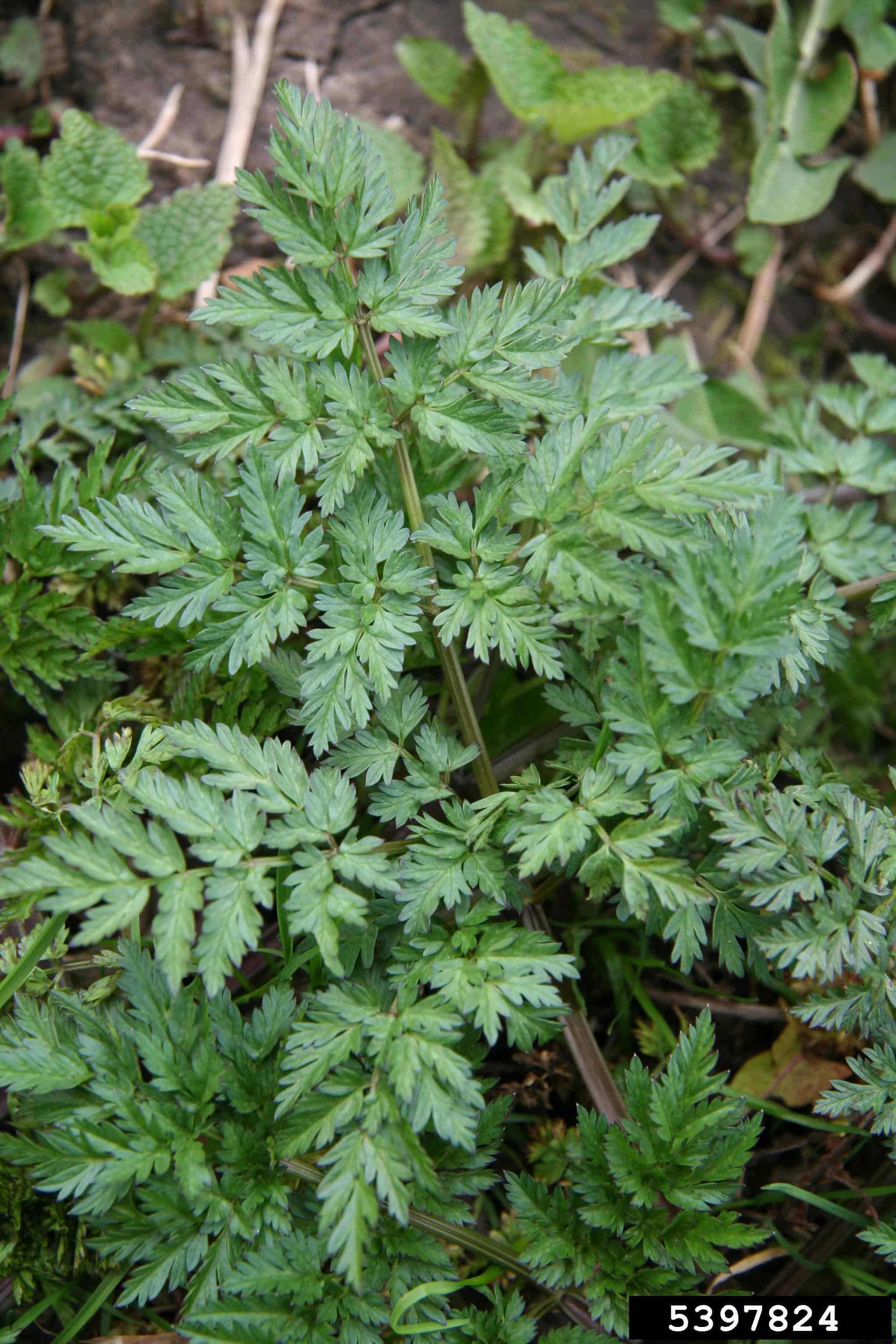
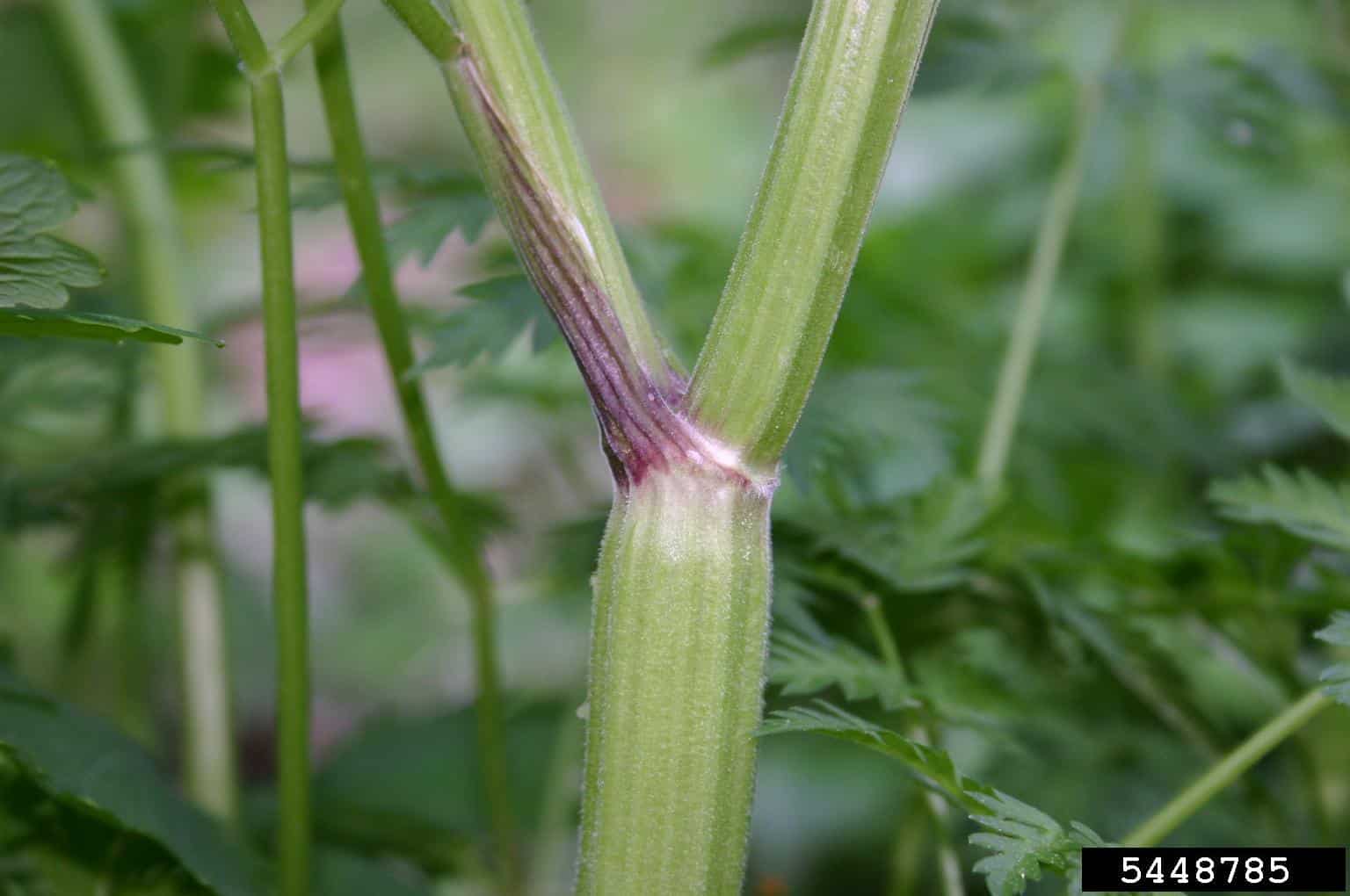
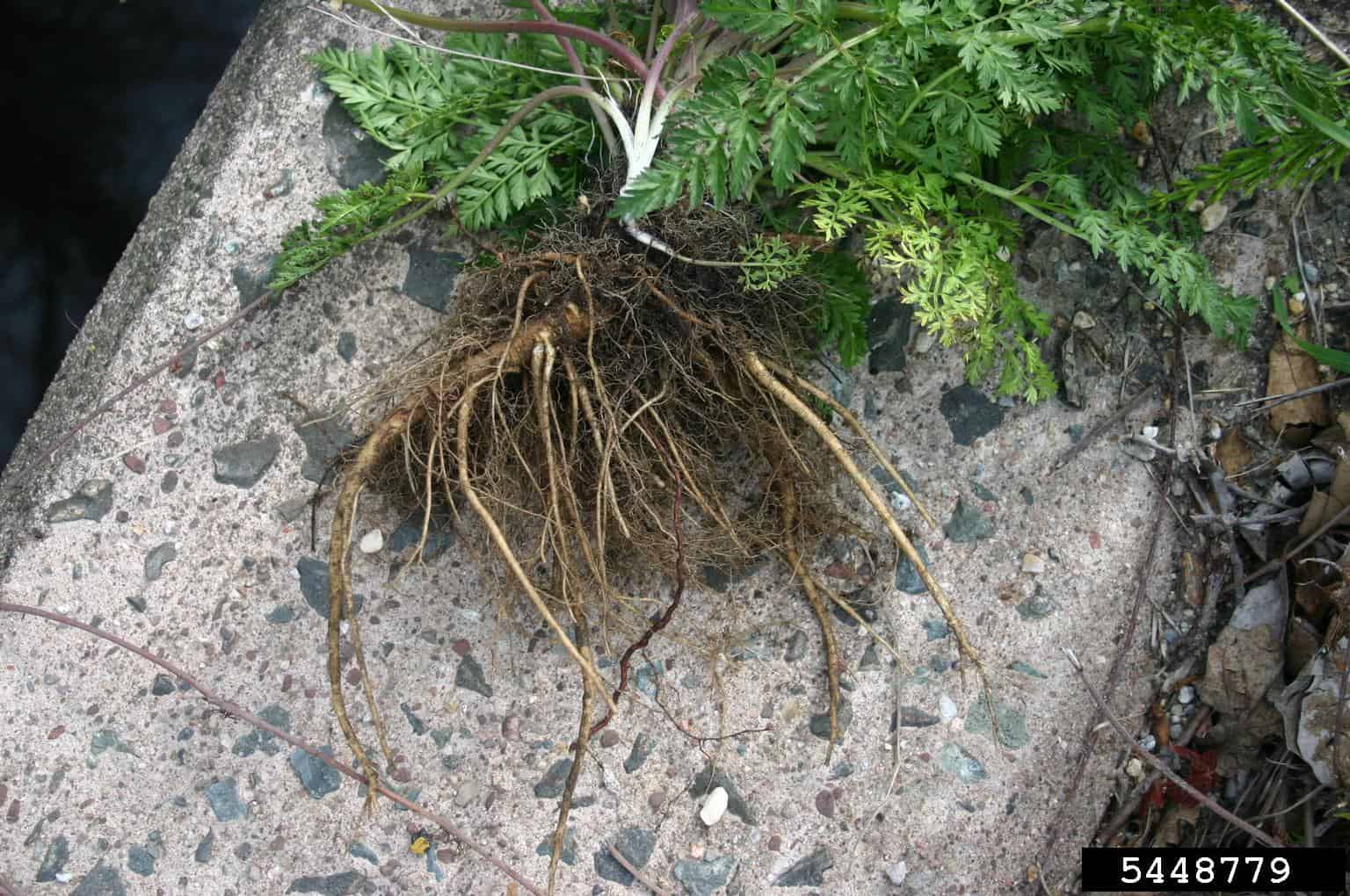
Similar Species
ESPÈCES SEMBLABLES
Similar species are based on a study of seed morphology of various species, and those with similar dispersal units are identified. The study is limited by physical specimen and literature availability at the time of examination, and possibly impacted by the subjectivity of the authors based on their knowledge and experience. Providing similar species information for seed identification is to make users aware of similarities that could possibly result in misidentification.
Anthriscus cerefolium (L.) Hoffm.
A. cerefolium mericarps are generally longer (length*: 5.8 – 9.2 mm; width: 0.7 – 1.0 mm) and are a thinner teardrop shape, almost cylindrical shaped. They have a sharply pointed style remnant, a granular surface texture and a wider furrow at the wide end of the mericarp, and translucent, greenish-brown endosperm compared to A. sylvestris. A. cerefolium is reported to grow in drier and sunnier habitats than A. sylvestris (Darbyshire et al. 1999).
*Note: minimum and maximum of 10 mericarps in a normal range of this species using image measurement (ISMA 2020)
Click to select species
Cliquez pour sélectionner les espèces
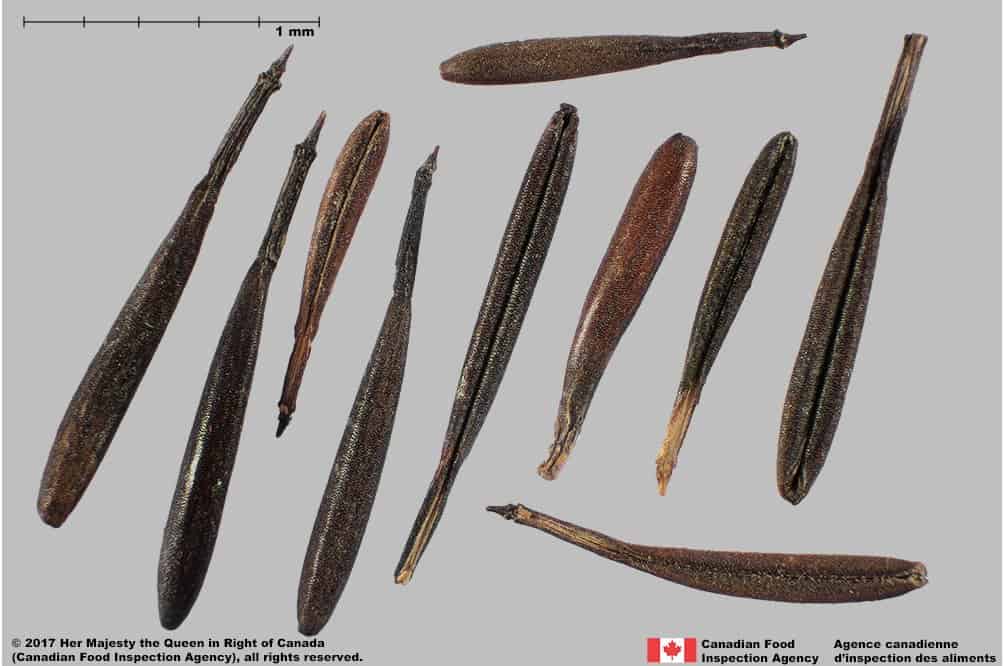
Anthriscus cerefolium
Comparison Window
Fenêtre de comparaison
MAIN SPECIES
ESPÈCES PRINCIPALES
Anthriscus sylvestris

Anthriscus sylvestris
Apiaceae
Cow parsley (Anthriscus sylvestris) mericarps
MAIN SPECIES
ESPÈCES PRINCIPALES
Anthriscus sylvestris

Anthriscus sylvestris
Apiaceae
Cow parsley (Anthriscus sylvestris) mericarps
MAIN SPECIES
ESPÈCES PRINCIPALES
Anthriscus sylvestris

Anthriscus sylvestris
Apiaceae
Cow parsley (Anthriscus sylvestris) mericarp
MAIN SPECIES
ESPÈCES PRINCIPALES
Anthriscus sylvestris

Anthriscus sylvestris
Apiaceae
Cow parsley (Anthriscus sylvestris) mericarp
MAIN SPECIES
ESPÈCES PRINCIPALES
Anthriscus sylvestris

Anthriscus sylvestris
Apiaceae
Anthriscus sylvestris schizocarps
SIMILAR SPECIES
ESPÈCES SEMBLABLES
Anthriscus cerefolium

Anthriscus cerefolium
Apiaceae
Garden chervil (Anthriscus cerefolium) mericarps
SIMILAR SPECIES
ESPÈCES SEMBLABLES
Anthriscus cerefolium
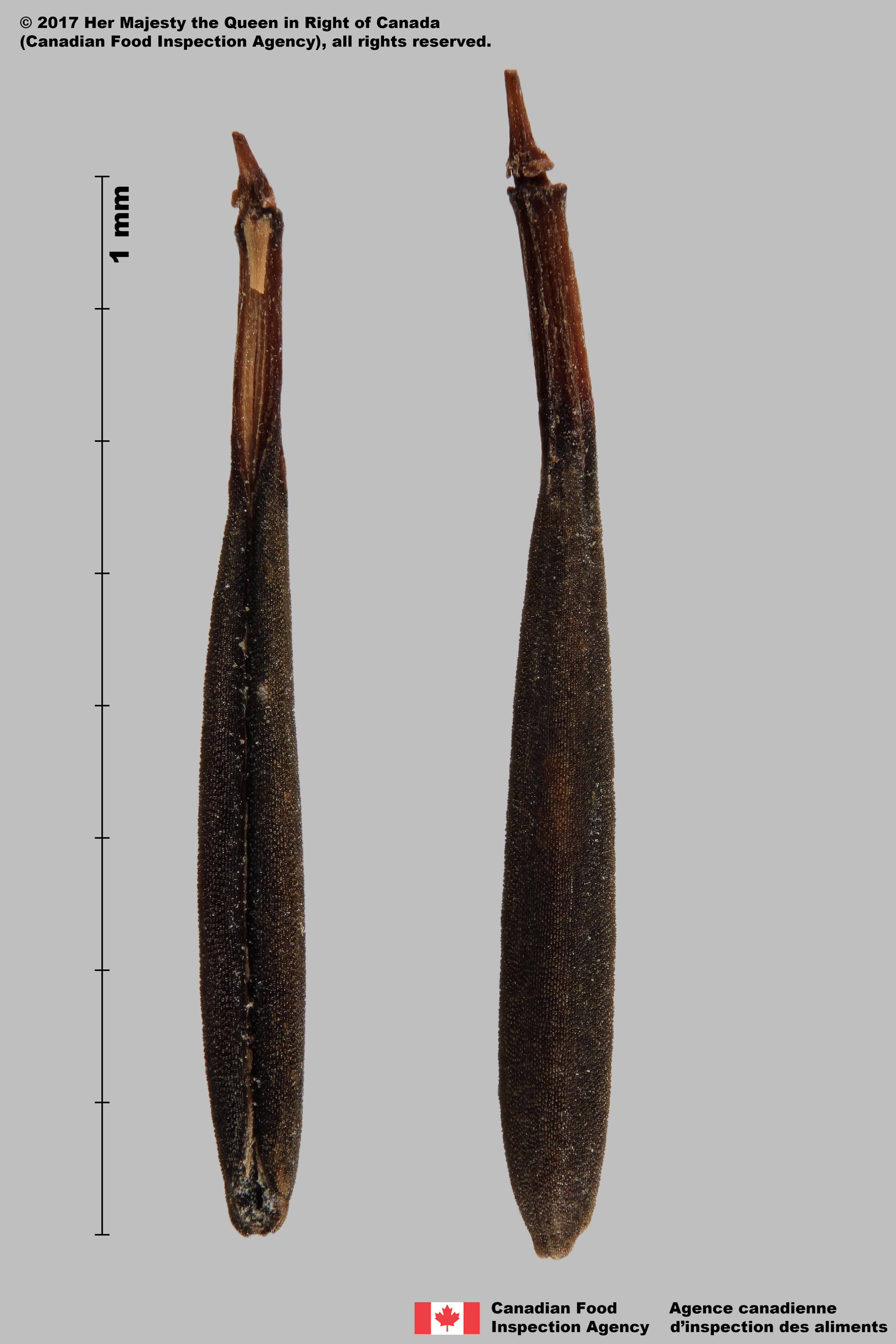
Anthriscus cerefolium
Apiaceae
Anthriscus cerefolium mericarps
SIMILAR SPECIES
ESPÈCES SEMBLABLES
Anthriscus cerefolium
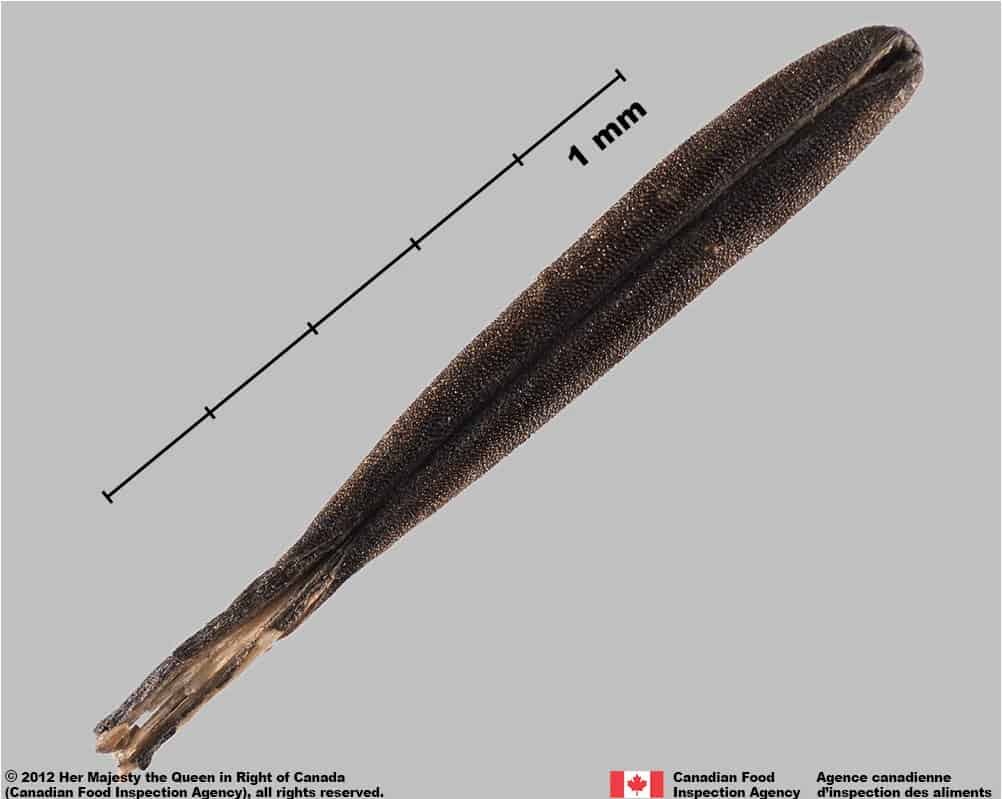
Anthriscus cerefolium
Apiaceae
Garden chervil (Anthriscus cerefolium) mericarp
SIMILAR SPECIES
ESPÈCES SEMBLABLES
Anthriscus cerefolium
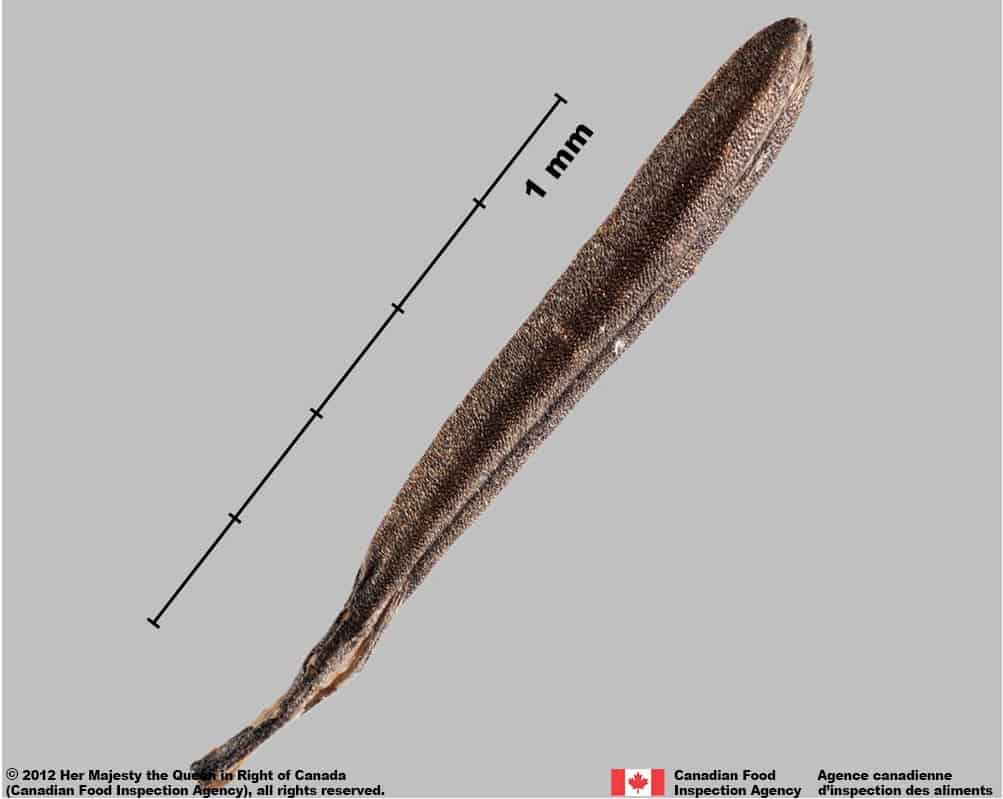
Anthriscus cerefolium
Apiaceae
Garden chervil (Anthriscus cerefolium) mericarp
SIMILAR SPECIES
ESPÈCES SEMBLABLES
Anthriscus cerefolium
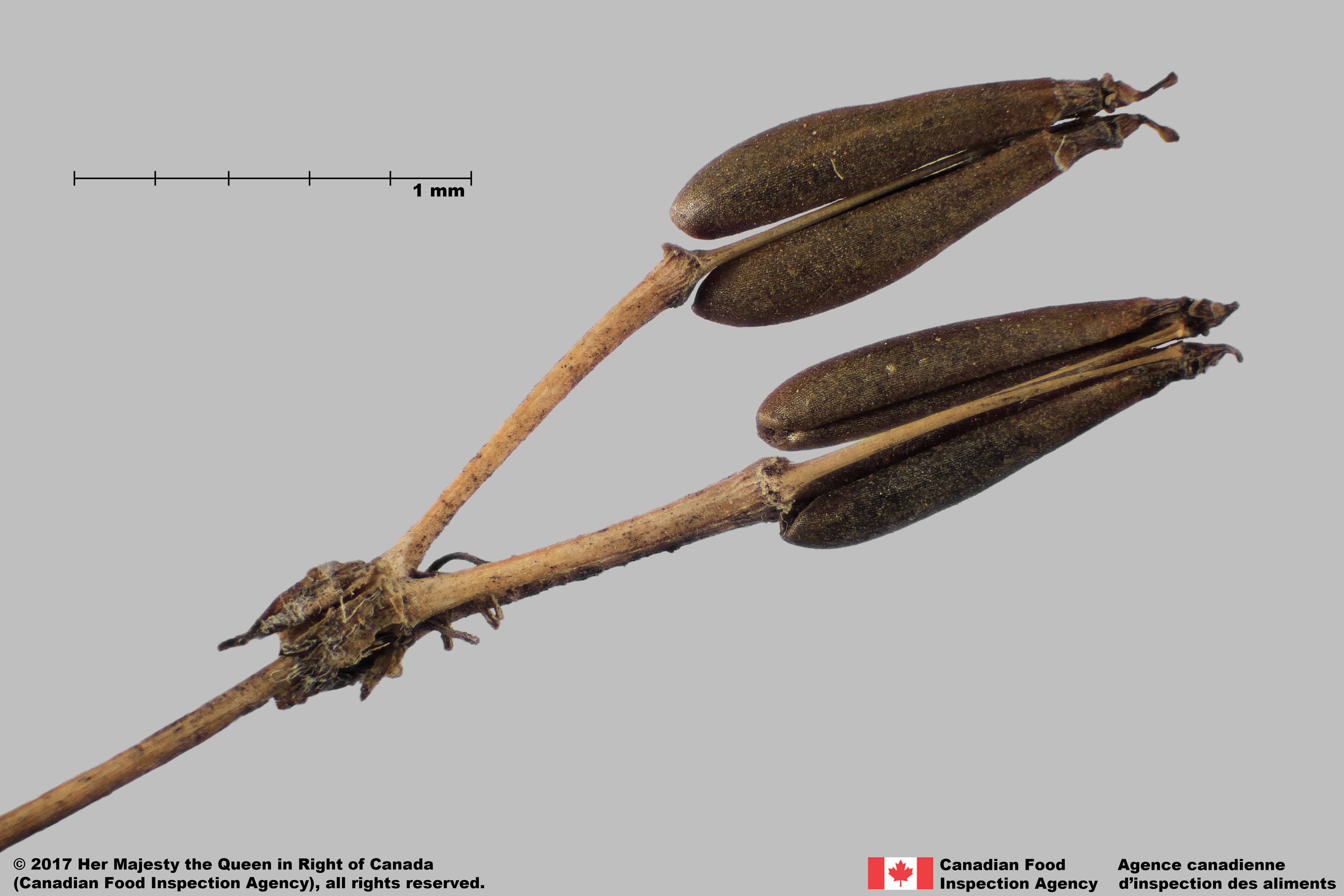
Anthriscus cerefolium
Apiaceae
Anthriscus cerefolium schizocarps
Need ID Help?
Besoin d’aide pour l’identification?
Reference(s)
Référence(s)
Brouillet, L., Coursol, F., Meades, S. J., Favreau, M., Anions, M., Bélisle, P. and Desmet, P. 2010+. VASCAN, the database of vascular plants of Canada. http://data.canadensys.net/vascan/ Accessed June 17, 2022.
Centre for Agriculture and Bioscience International (CABI). 2022. Invasive Species Compendium, CAB International, Wallingford, UK. https://www.cabidigitallibrary.org/journal/cabicompendium Accessed Accessed June 17, 2022.
Darbyshire, S. J. 2003. Inventory of Canadian Agricultural Weeds. Agriculture and Agri-Food Canada, Research Branch. Ottawa, ON.
Darbyshire, S. J., Hoeg, R. and Haverkort, J. 1999. The biology of Canadian weeds. 111. Anthriscus sylvestris (L.) Hoffm. Canadian Journal of Plant Science 79: 671–682.
Fraser Valley Invasive Species Society (FVISS). 2022. https://fviss.ca/invasive-plant/wild-chervil Accessed May 10, 2022.
Global Biodiversity Information Facility (GBIF) Secretariat. 2022. https://doi.org/10.15468/39omei Accessed via https://www.gbif.org/species/5371742 Accessed December 29, 2022.
Government of Canada (GC). 2016. Canadian Weed Seeds Order. https://laws-lois.justice.gc.ca/eng/regulations/SOR-2016-93/page-2.html (English) https://laws-lois.justice.gc.ca/fra/reglements/DORS-2016-93/page-2.html (French)
International Seed Morphology Association (ISMA). 2020. Method for Seed Size Measurement. Version 1.0. ISMA Publication Guide.
Magnússon, S. H. 2006. NOBANIS – Invasive Alien Species Fact Sheet – Anthriscus sylvestris. Online Database of the North European and Baltic Network on Invasive Alien Species – NOBANIS, https://www.nobanis.org/species-info/?taxaId=1858 Accessed May 30, 2016.
Plants of the World Online (POWO). 2022. Facilitated by the Royal Botanic Gardens, Kew. Published on the Internet; http://www.plantsoftheworldonline.org/ Accessed May 10, 2022.
Rew, L. J., Froud-Williams, R. J. and Boatman, N. D. 1996. Dispersal of Bromus sterilis and Anthriscus sylvestris seed within arable field margins. Department of Agricultural Botany, 2 Earley Gate, University of Reading, Reading, UK.
Tropicos. 2022. Missouri Botanical Garden. https://tropicos.org Accessed May 10, 2022.
U.S. Department of Agriculture-Agricultural Research Services (USDA-ARS). 2022. Germplasm Resources Information Network – (GRIN), https://npgsweb.ars-grin.gov/gringlobal/taxon/taxonomysimple.aspx Accessed May 10, 2022.
U.S. Department of Agriculture-Natural Resources Conservation Service (USDA-NRCS). 2022. The PLANTS Database. National Plant Data Team, Greensboro, NC USA. http://plants.usda.gov Accessed December 29, 2022.
Walters, D.S. 2011. Identification Tool to Weed Disseminules of California Central Valley Table Grape Production Areas. USDA APHIS PPQ CPHST Identification Technology Program, Fort Collins, CO. http://idtools.org/id/table_grape/weed-tool/ Accessed May 31, 2021.



